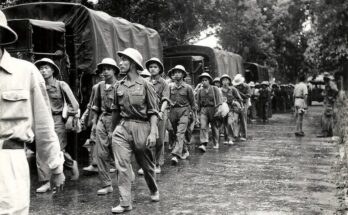Introduction
The Salem Witch Trials remain one of the most infamous events in American history. This dark episode, marked by mass hysteria and wrongful executions, took place in colonial Massachusetts between 1692 and 1693. But what really happened? Why did a peaceful Puritan settlement descend into chaos? And what can we learn from this tragedy? Let’s dive into the details of this eerie past and uncover the grim realities of the Salem Witch Trials.
The Origins of the Witch Hysteria
Before the first accusation was even made, fear of witchcraft already existed in New England. The Puritans, deeply religious and superstitious, believed that the Devil walked among them, seeking to corrupt their souls. This fear, combined with societal tensions, created a perfect storm for mass paranoia.
The Role of Puritan Beliefs
The Puritans lived strict, religious lives where any deviation from the norm was considered suspicious. They believed that the Devil could possess individuals and turn them into witches. Those accused of witchcraft were thought to have made a pact with Satan, granting them supernatural powers in exchange for their souls.
The Impact of Social Struggles
Salem in the late 17th century was rife with conflicts disputes over land ownership, economic struggles, and political tensions. Many historians believe that these factors played a crucial role in the accusations, as personal grudges and rivalries turned deadly.
The First Accusations
In early 1692, two young girls, Betty Parris and Abigail Williams, began exhibiting strange behaviors convulsions, screaming fits, and trance-like states. Unable to explain their afflictions, the community turned to supernatural explanations. Under pressure, the girls accused three women of bewitching them:
- Tituba – A slave from the Caribbean, who was an easy target due to her foreign background.
- Sarah Good – A homeless beggar, already disliked by the community.
- Sarah Osborne – An elderly woman who had disputes over land.
Once these accusations were made, fear spread like wildfire.
The Spread of Witchcraft Allegations
The initial accusations opened the floodgates. More and more people mainly women but also men were accused of witchcraft. The trials became a method of settling old scores and eliminating enemies. Some of the key reasons behind the rapid spread included:
The Role of Spectral Evidence
One of the most controversial aspects of the Salem Witch Trials was the use of “spectral evidence.” This meant that a person’s spirit or ghostly form could harm others, even if their physical body was elsewhere. If an afflicted person claimed to see a specter attacking them, it was considered valid evidence in court.
The Power of Fear and Mass Hysteria
Hysteria is contagious. When one person panicked, others followed. The fear of witches infiltrating the community led people to believe the wildest accusations. Innocent people confessed to witchcraft simply to avoid torture or execution.
The Infamous Salem Witch Trials
By mid-1692, Salem’s legal system was overwhelmed with accusations. Special courts were established to handle the cases, leading to rushed trials and unjust verdicts.
Key Trials and Executions
Some of the most notable figures in the trials included:
- Bridget Bishop – The first person executed, hanged on June 10, 1692.
- Rebecca Nurse – A respected elderly woman, despite petitions for her innocence, she was found guilty and hanged.
- Giles Corey – Refused to enter a plea and was pressed to death with heavy stones.
In total, 19 people were hanged, one was pressed to death, and several others died in prison.
The Role of Judges and Officials
Key figures in the trials included:
- Judge Samuel Sewall – Later publicly apologized for his role in the trials.
- Cotton Mather – A prominent minister who supported the trials but later expressed regret.
- Governor William Phips – Dissolved the special court when he realized the injustice.
IoT-Enhanced Beekeeping: Monitoring Pollination Rates in Agriculture
The End of the Witch Trials
By late 1692, the hysteria began to die down. The governor of Massachusetts intervened, forbidding spectral evidence and ultimately putting an end to the trials. By 1693, those still imprisoned were released, and the dark chapter began to close.
The Aftermath and Regrets
Over time, the Salem community recognized the tragedy of what had occurred. Many officials issued public apologies, and restitution was offered to the families of the accused. However, the damage had been done lives were lost, reputations ruined, and an entire community left scarred.
Lessons Learned from Salem
The Salem Witch Trials serve as a cautionary tale about the dangers of hysteria, blind faith, and injustice. Some of the key takeaways include:
The Dangers of Mass Hysteria
Fear can be more dangerous than the thing we fear. The trials demonstrate how quickly panic can spread, leading to disastrous consequences.
The Importance of Fair Trials
The lack of proper evidence and the use of spectral evidence highlight why due process and fair trials are essential in any judicial system.
The Perils of Scapegoating
The trials show how easily society can turn against individuals based on bias, rumors, and personal grudges.
The Political Career of Winston Churchill: A Legacy of Leadership
Conclusion
The Salem Witch Trials remain a haunting reminder of what happens when fear overrides reason. Although centuries have passed, similar themes mass hysteria, wrongful accusations, and miscarriages of justice still appear in modern society. By studying this dark chapter, we can strive to prevent history from repeating itself.
FAQs
1. What caused the Salem Witch Trials?
The trials were caused by a mix of religious beliefs, social tensions, and mass hysteria, fueled by paranoia about witchcraft.
2. How many people were executed during the Salem Witch Trials?
A total of 20 people were executed—19 were hanged, and one was pressed to death.
3. Why was spectral evidence so controversial?
Spectral evidence was based on visions and dreams rather than physical proof, making it unreliable and easily manipulated.
4. Did anyone apologize for the trials?
Yes, several key figures, including Judge Samuel Sewall and the Massachusetts government, later issued apologies.
5. What lessons can we learn from the Salem Witch Trials?
The trials teach us about the dangers of hysteria, the importance of fair trials, and the consequences of scapegoating innocent people.


